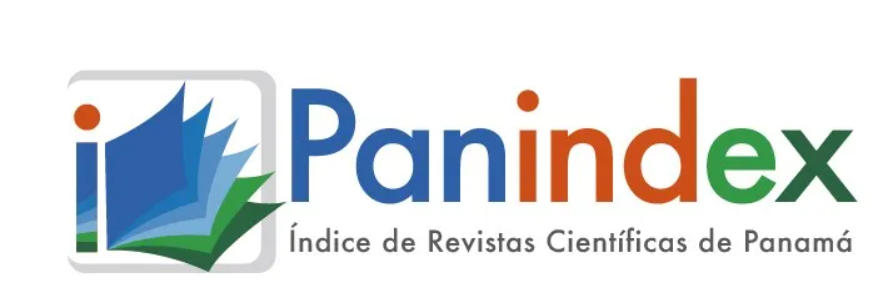The content of the publications and the links suggested in them are the sole responsibility of the authors and not of the METROPOLITAN UNIVERSITY OF EDUCATION, SCIENCE AND TECHNOLOGY (UMECIT) or DIALOGUS magazine. They are protected by international copyright laws as well as the UMECIT and DIALOGUS logos, hence their reproduction is totally prohibited.
This work is licensed under a Creative Commons Attribution-NonCommercial-NoDerivatives 4.0 International License.
The authors maintain the copyright and transfer the right of the first publication to the journal, with the article registered with Creative Commons Attribution-NonCommercial-NoDerivatives License, which allow others They can download the works published in this magazine and share them with other people, as long as their authorship is recognized, but they cannot be changed in any way nor can they be used commercially.
Authors are recommended to include their work in social networks such as Researchgate and institutional repositories once the article or visible fact has been published on the journal page, without forgetting to include the digital document identifier and the name of the journal.



Abstract
The current research is aimed at identifying the reasons for the shortcomings presented in the school climate in elementary school at the San Lorenzo Educational Institution in the municipality of Suaza, Colombia. It is developed within a methodology with a quantitative positivist approach of a diagnostic research type, which fundamentally consists of characterizing a specific phenomenon or situation indicating its features (Canabal, 2015). The population selected for the research is constituted by the educational community of the San Lorenzo Educational Institution and as a population sample the total population of basic secondary is taken with a total of 378 students of the sixth, seventh, eighth and ninth grades because they are the grades with higher rates of school coexistence problems. In addition, parents, 21 teachers including the guidance teacher, 4 administrators and 2 managers are taken, using the non-probabilistic method that allows the researcher to select the target population of the sample for the convenience of the researcher. The application of surveys or questionnaires to characterize the population is used to determine the weaknesses and difficulties in the school climate and their implications for healthy coexistence. The diagnostic test is supported by the field diary, elements of a descriptive quantitative research. It is proposed as a pedagogical strategy the elaboration of three work units focused on working as central themes bullying, coexistence and peace, and plurality, identity, and valuation of differences. Finally, a confirmation of the exposed hypothesis is made, thereby allowing the establishment of a series of activities associated with the way in which academic training processes mediated by information and communication technologies are developed.
Keywords
References
Ausubel, D. (2006). . Teoría del aprendizaje significativo. Fascículos de CEIF, 10.
Barbas, A. (2012). Educomunicación: Desarrollo, enfoques y desafíos en un mundo interconectado. Redalyc.org, (14), pp. 157-175. Disponible en: http://www.redalyc.org/html/4475/447544618012/. Consultado el 01/08/2019
Canabal Guzmán Javier (2015). Guía metodológica para la elaboración y presentación de trabajos de grado. Serie metodología de la investigación. Publicaciones Unisinú, primera edición. Montería, Colombia. ISBN 978-958-8553-28-3
Cerda, H. (2013). Los elementos de la investigación. Bogotá: El búho.
Goode, W. (1991). Métodos de investigación social. México: Editorial Trillas. Ciudad de México, México.
Hernández Sampieri (2008). Formulación de Hipótesis en metodología de la investigación. México: Mac Graw Hill.
Levis, M. (2011). . Ambiente distribuido aplicado a la formación/ capacitación de RR HH: Un modelo de aprendizaje cooperativo- colaborativo. Universidad Autónoma de Manizales.
MEN, Ministerio de Educación Nacional. (2006). Educación virtual o educación en línea. Obtenido de https://www.mineducacion.gov.co/1621/article-196492.html. Consultado el 23/05/2019
MEN, Ministerio de Educación Nacional de Colombia. (1994). Ley 115 febrero 8 de 1994. Congreso de La República. Colombia
Montaner, L. & Álvarez, M. (2014). El aula, espacio propicio para el fortalecimiento de competencias ciudadanas y tecnológicas. Sophia, 39-50.
Ministerio de Educción Nacional MEN (2015). Guía 4 Para directivos docentes el ambiente escolar y el mejoramiento de los aprendizajes. Disponible en: http://aprende.colombiaaprende.edu.co/sites/default/files/naspublic/Guia%204_Ciclo%203_V4ok.pdf. Consultado el 18/10/2019.
Musri, Y. (2012). Manual de Oslo, Guía para la recogida e interpretación de datos sobre innovación. OCDE y Eurostat
Orozco, J. (2015). Diseño de un marco teórico explicativo sobre la acreditación escolar como herramienta para el mejoramiento de la calidad de la educación básica y media pública de Bogotá, d.c. Disponible en: http://repository.lasalle.edu.co/bitstream/handle/10185/18483/DE122206_2015.pdf?sequence=1&isAllowed=y. Consultado el 21/10/2019
Osorio, R. (2014). Un ambiente Virtual de Aprendizaje para la enseñanza del Cálculo en Educación superior. IX Conferencia Latinoamericana de Objetos y Tecnologías de Aprendizaje. Obtenido de www.laclo.org/laclo2014. Recuperado el 21/10/2019
Plan Nacional Decenal de Educación (2016). Disponible en: http://www.plandecenal.edu.co/cms/index.php/novedades/56-documento-final-plan-decenal-de-educacion-2016-2026. Consultado el 20/10/201
Peña, F & Téllez, W. (2017). Moodle y la influencia de la percepción visual en el aprendizaje. Universidad de La Salle. Fundación Universitaria del Área Andina. 9(1), 89. Obtenido de http://revistas.lasalle.edu.co/index.php/sv/article/view/221. Recuperado el 18/10/2019
Ramírez. F. (2016). Convivencia escolar en instituciones de educación secundaria: un estudio transcultural desde la perspectiva estudiantil. Universidad Complutense de Madrid. Disponible en: https://eprints.ucm.es/40428/1/T38108.pdf. Consultado 20/10/2019.
Suárez, C. A.-E. (2017). Modelo de competencias TIC para docentes: Una propuesta para la construcción de contextos educativos innovadores y la consolidación de aprendizajes en educación superior. Katharsis(22). doi:https://doi.org/10.25057/25005731.821. Consultado el 21/10/2019
Tamayo y Tamayo, Mario. El proceso de la investigación científica. Editorial Limusa. México. 2002.
UNESCO (2013). Análisis del clima escolar, poderoso factor que explica el aprendizaje en América Latina y el Caribe. Santillana. Disponible en: http://www.unesco.org/new/fileadmin/MULTIMEDIA/FIELD/Santiago/pdf/analisis-del-clima-escolar.pdf. Consultado el 21/10/2019
Uribe, N. (2013). La convivencia escolar desde la perspectiva de la resiliencia: un apoyo a la gestión educativa. Universidad Libre de Colombia. Facultad de ciencias de la educación. Instituto de postgrados, Especialización en gerencia y proyección social de la educación.
Vargas Sánchez, Ana D. año (2016) Espacio de investigación para la educación de la paz y la convivencia apoyado por las TIC Universidad de Zulia Biblioteca Digital. Repositorio académico Recuperado de: http://www.produccioncientifica.luz.edu.ve/index.php/opcion/article/viewFile/ 21573/ 21379. Consultado el 21/10/2019
Downloads
Publication Facts
Reviewer profiles N/A
Author statements
- Academic society
- Universidad Metropolitana de Educación, Ciencia y Tecnología
- Publisher
- Universidad Metropolitana de Educación, Ciencia y Tecnología




















